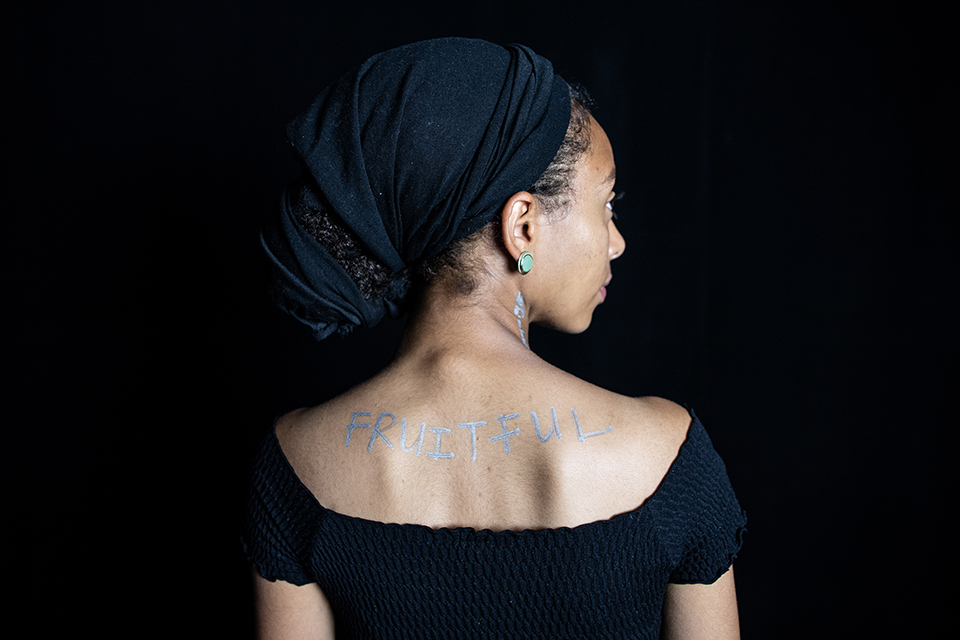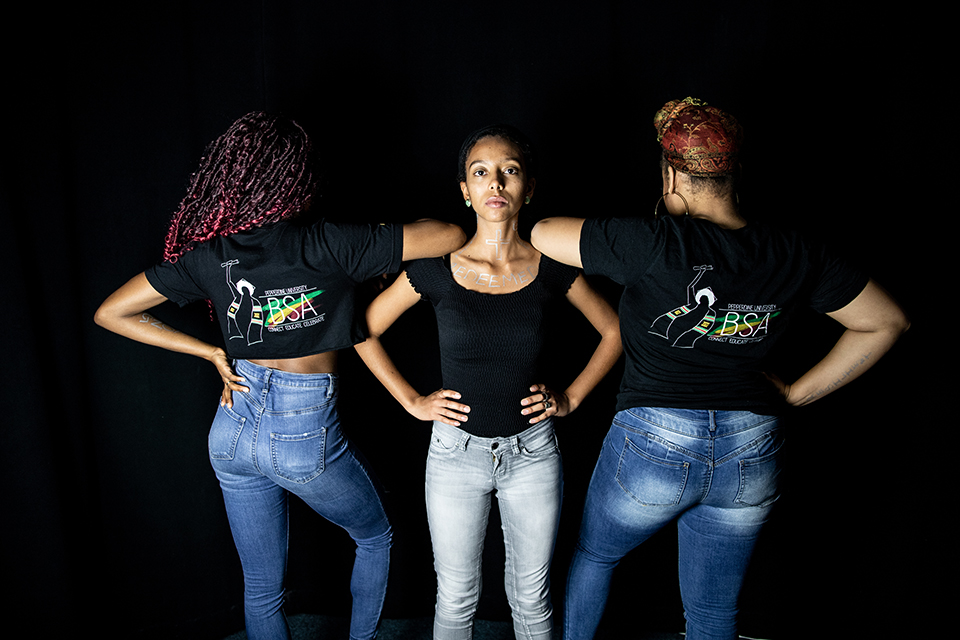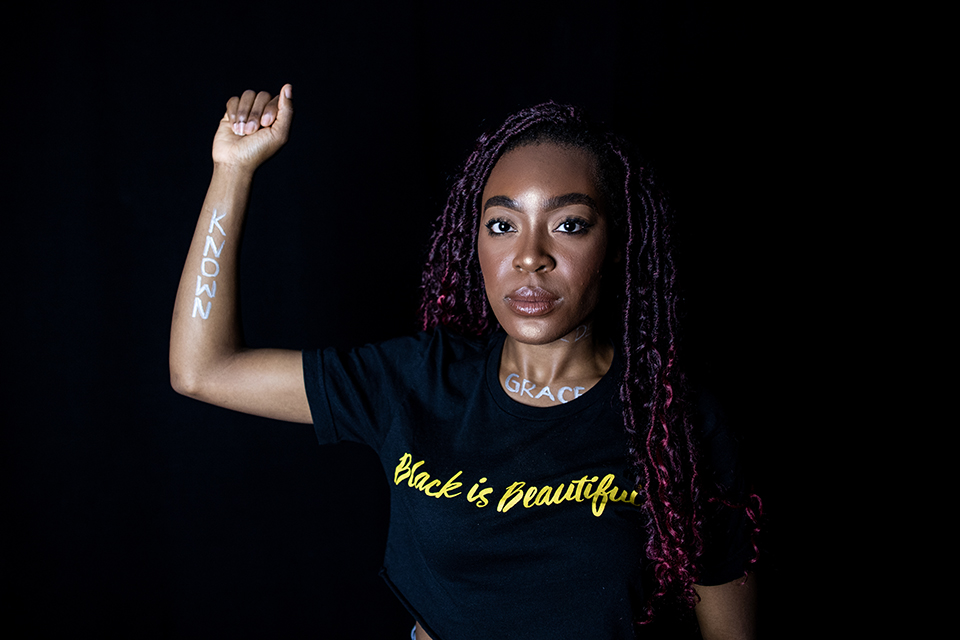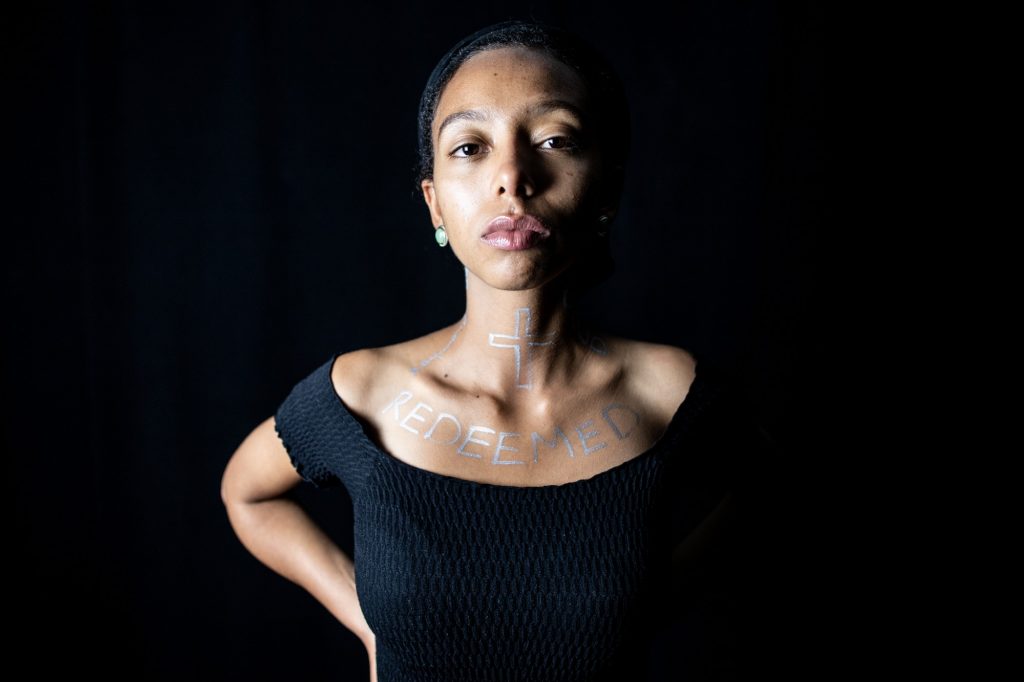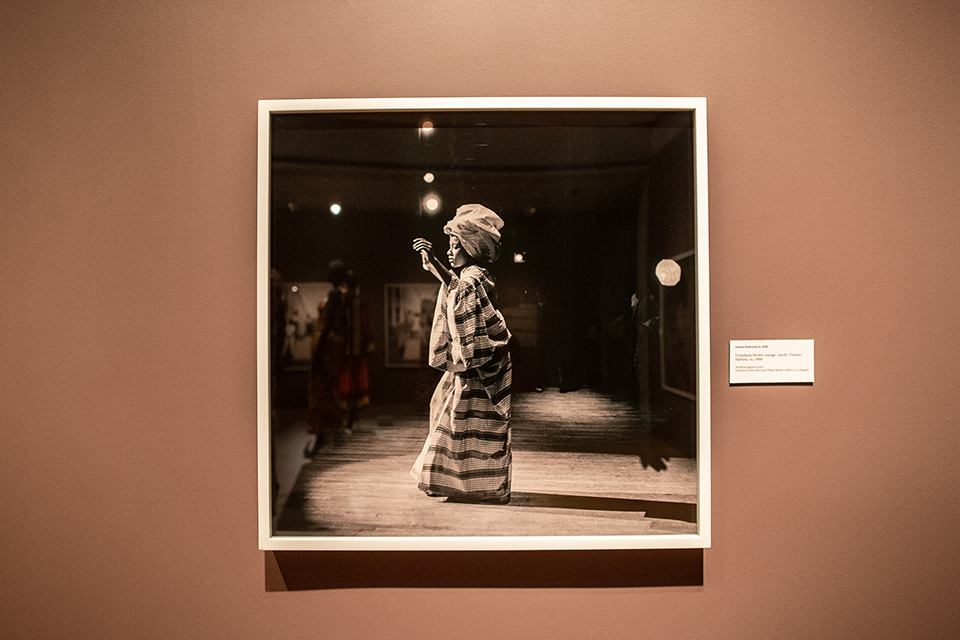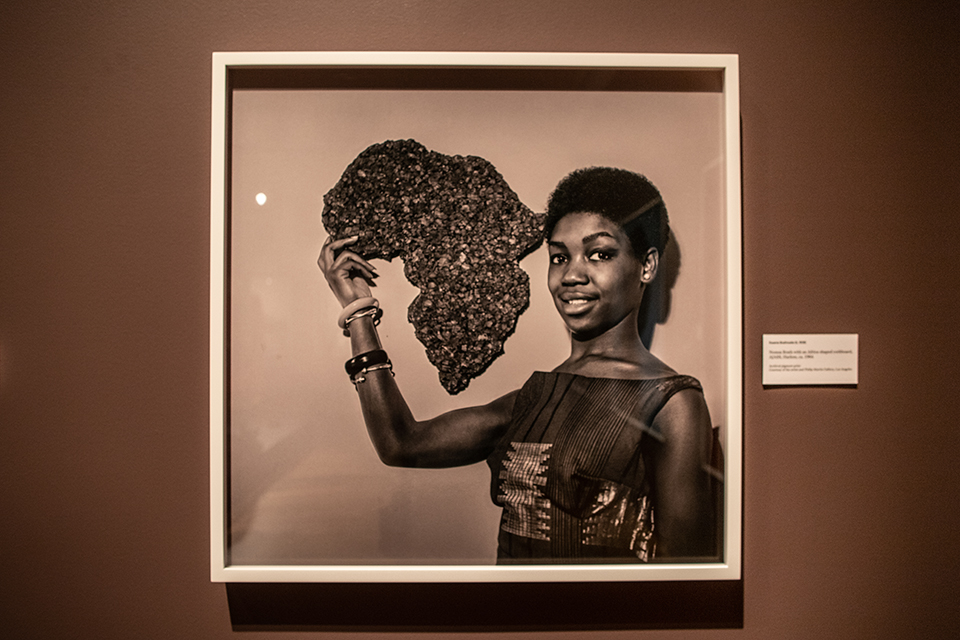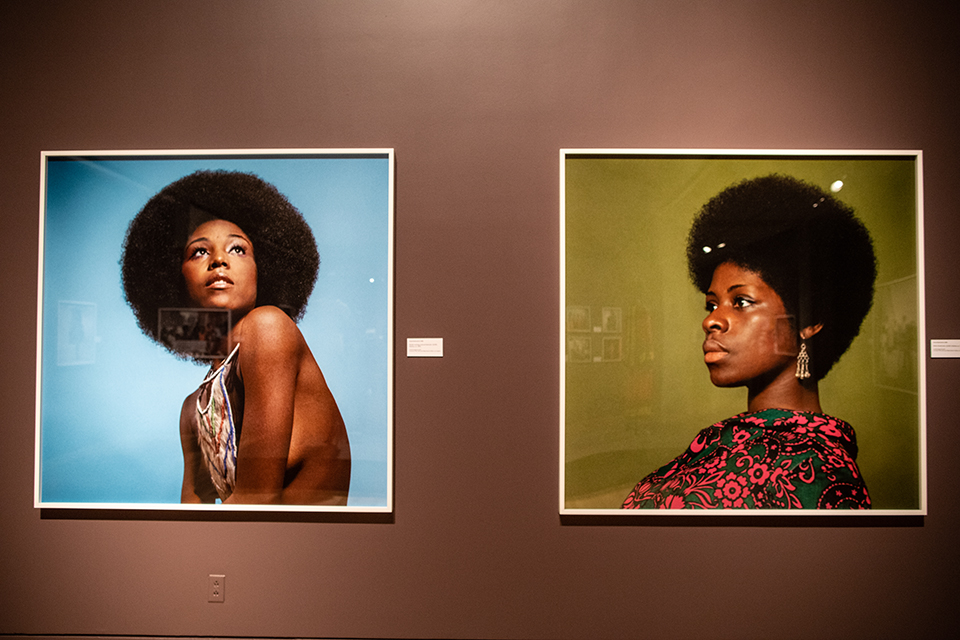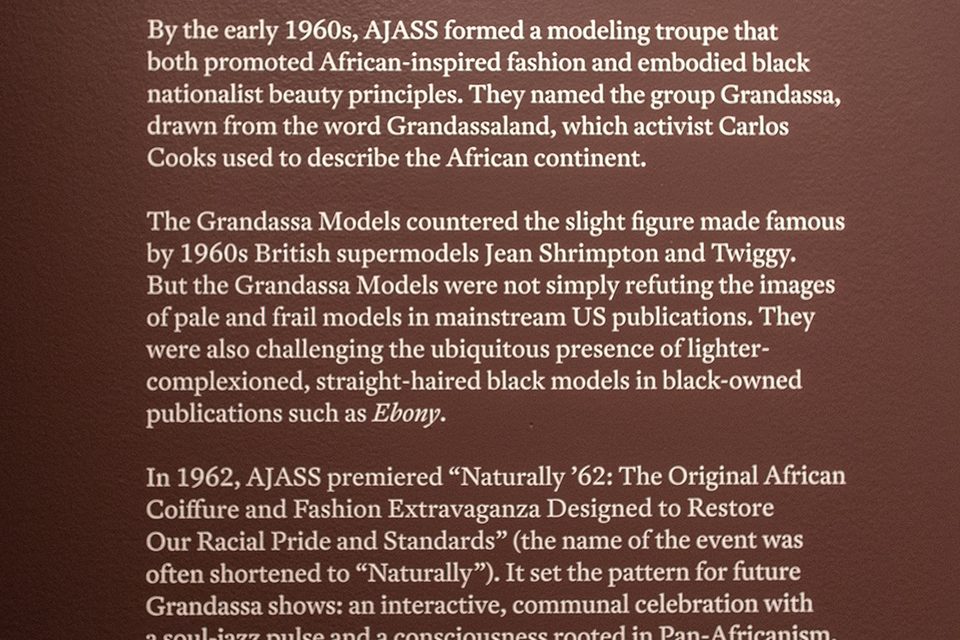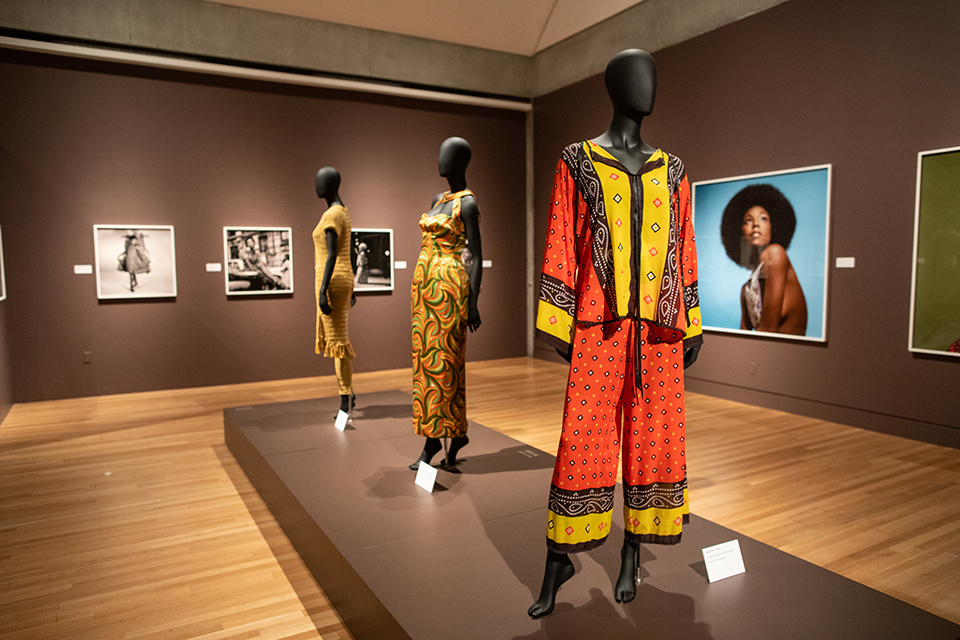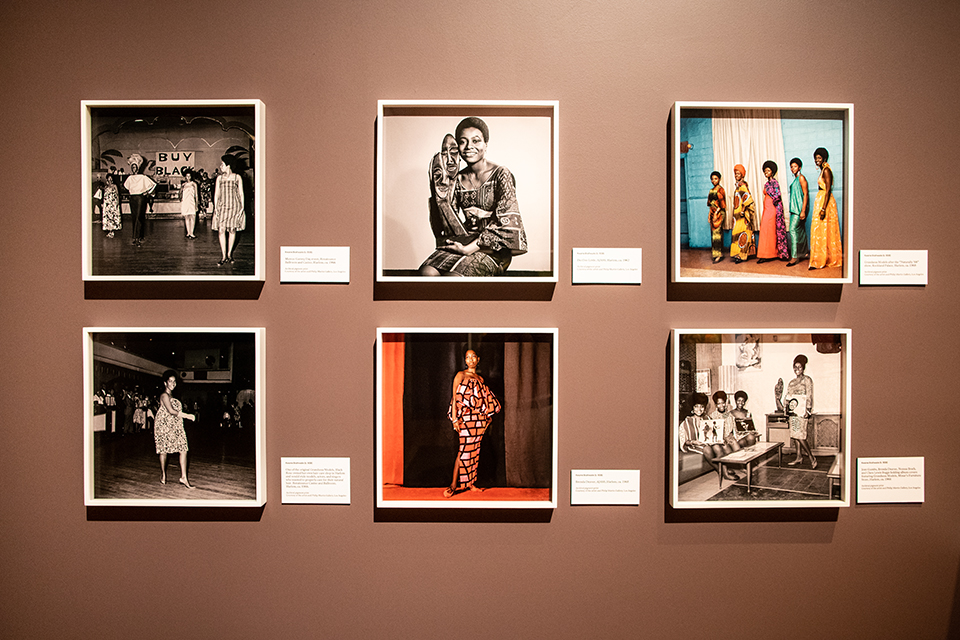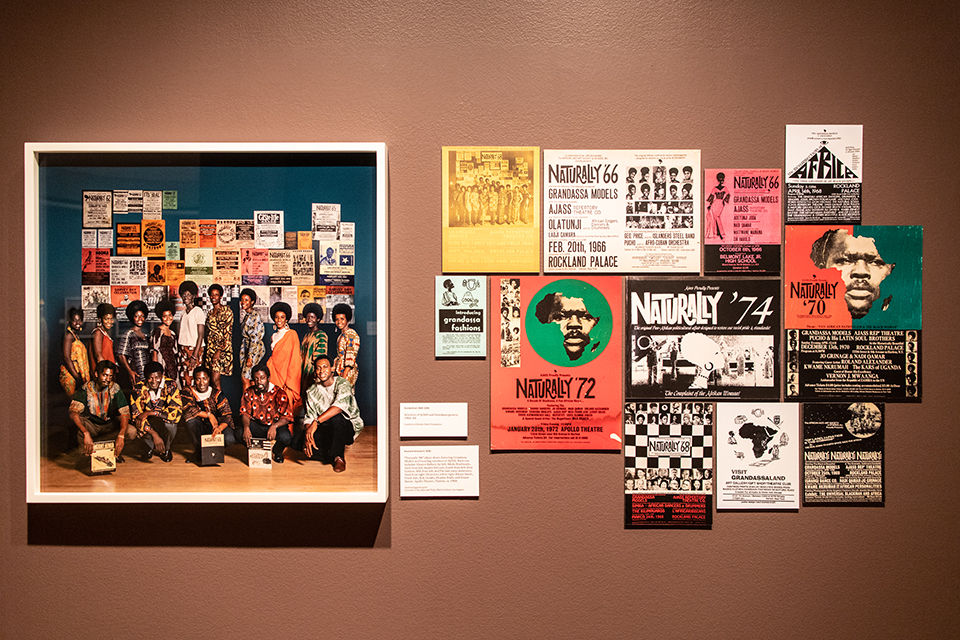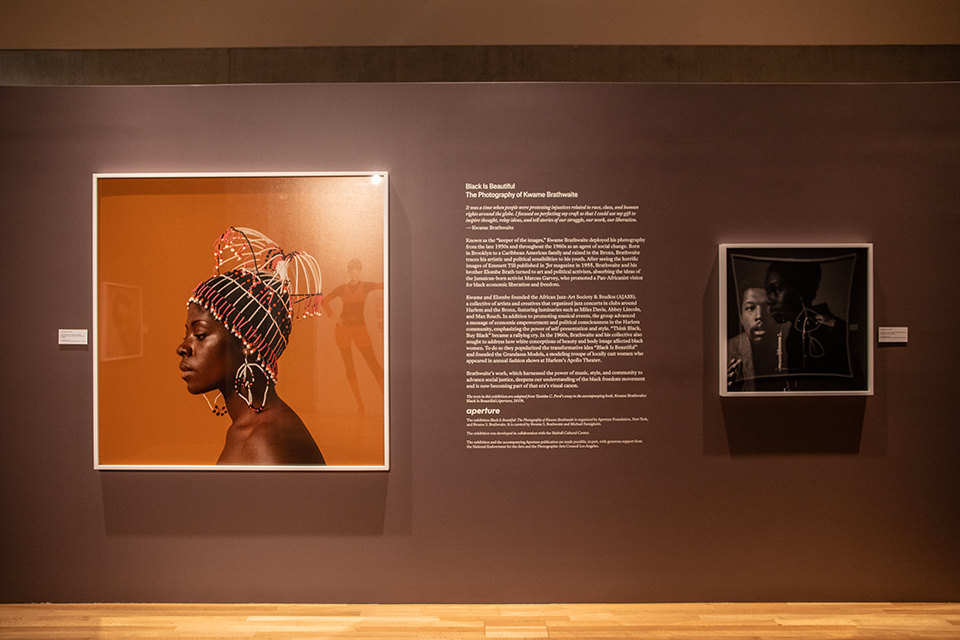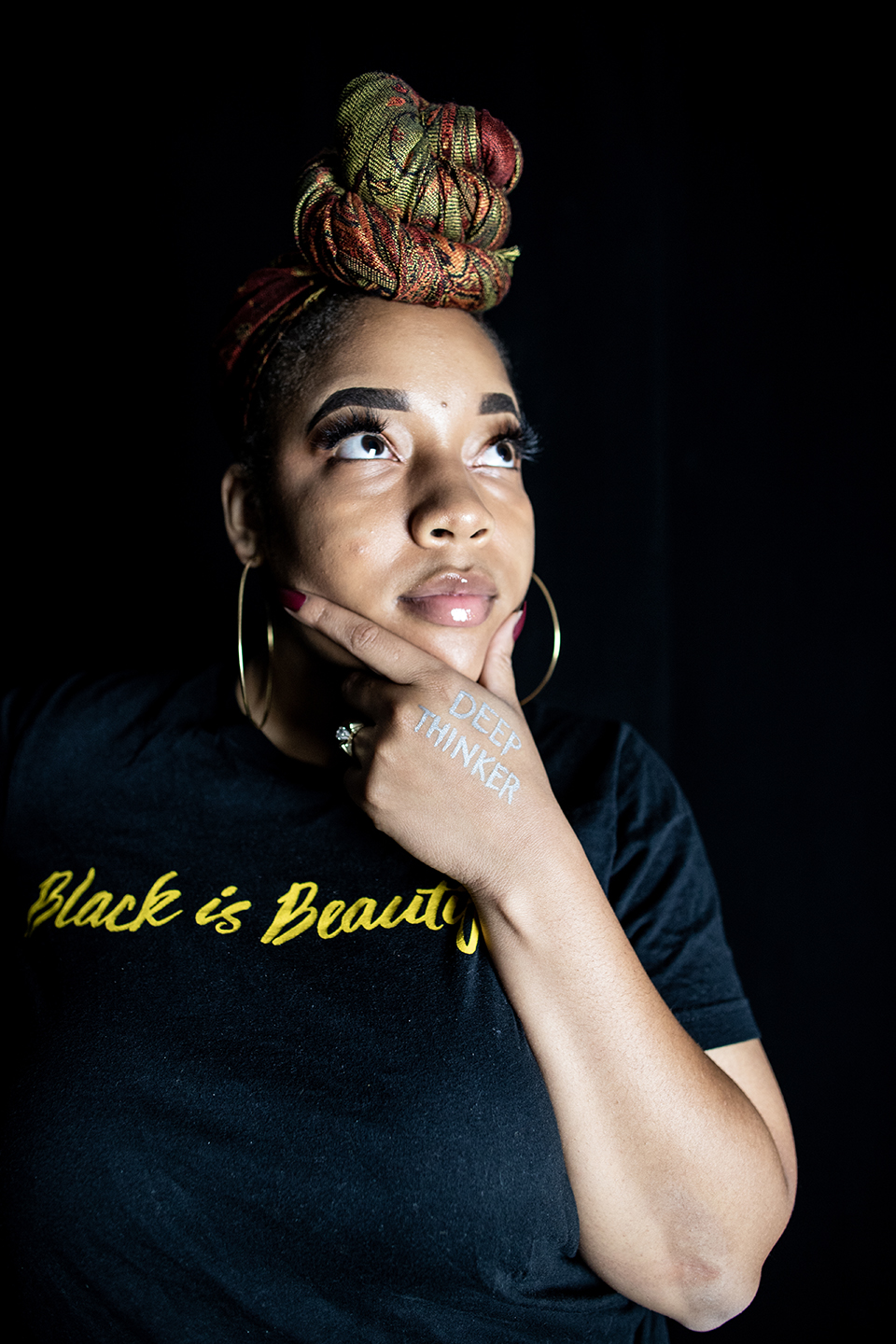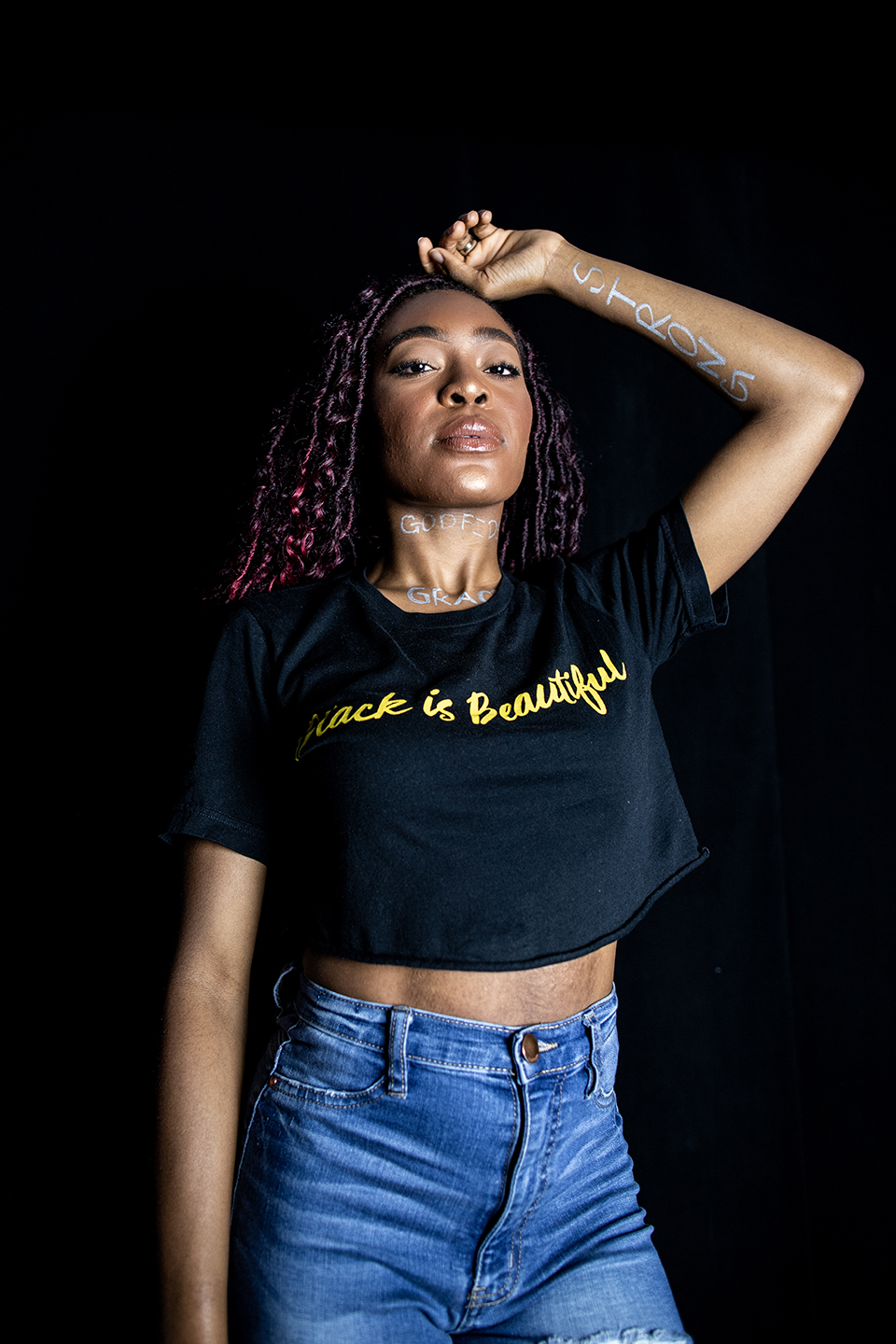Photos by Milan Loiacono
Editor’s note: The ability to write one’s own story is a luxury. Society often tries to wrestle the pen away, dictating a narrative that is rarely accurate and often damaging. The incredible women pictured throughout this story — Peace Ikeduba, Olivia Robinson and Heavin Hunter-Hernandez — took back the pen to define for themselves who they are and share the truth about their community.
What does it mean to be Black?
For centuries, African Americans have had to think deeply about their ethnic identity amidst a predominantly white culture that has repeatedly marginalized them.
In the 1960s, during the Civil Rights era, the Black is Beautiful campaign encouraged African Americans to embrace their beauty and culture while being oppressed in an environment that set the standards for what it meant to be beautiful.
“It’s not saying Black is beautiful so everything else is ugly,” said Eric Wilson, associate dean of Student Affairs and executive director of Spiritual Life Programs. “It’s saying that the beauty that God has adorned me with is as valuable as any other form of beauty that exists in the world.”
In interviews with four experts and 10 students, all agreed that African Americans on campus still need the Black is Beautiful campaign for self-love today, especially at a predominantly white institution where Black students have to navigate through white spaces.
Dark skin versus light skin
Geneva Moore, office manager for the Humanities and Teacher Education division, said that because she was born in 1968, she grew up during a time when society taught that “White is right, and Black is wrong.”
All 10 students interviewed for this story, born more than three decades later than Moore, said they grew up with the same message.
Before the campaign, Blacks had to find ways to convince themselves that their skin color did not mean that they were “less than.”
“Blackness and darkness are almost synonymous in our language at this point,” junior Justus Bell said.
Bell said light and dark motifs in literature and film reinforce negative perceptions of African Americans.
“Black is known as bad and a symbol for evil,” Bell said. “If you look in movies, the villain is just always seen in a darker manner, like Scar versus Mufasa in ‘The Lion King.’”
When authors and filmmakers make black bad, they also make white good.
“We’ve been socialized to associate blackness with darkness, with impurity; it just has a negative connotation since the beginning of time,” senior Shanelle Wilkins said. “On the other hand, we associate whiteness with purity, cleanliness and just with so many positive connotations. I think it is very difficult to change that narrative in the minds of others.”
This dichotomization of black and white dates back to Greek philosopher Aristotle and his Pythagorean Table of Opposites.
“He basically set up a dualism, logic chart,” Communication Professor Roslyn Satchel said. “He created a table, put all the positives on one side, all the negatives on the other side, assigned all the positives to characteristics and features of whiteness, and [assigned] all the negatives [to] characteristics and features of blackness.”
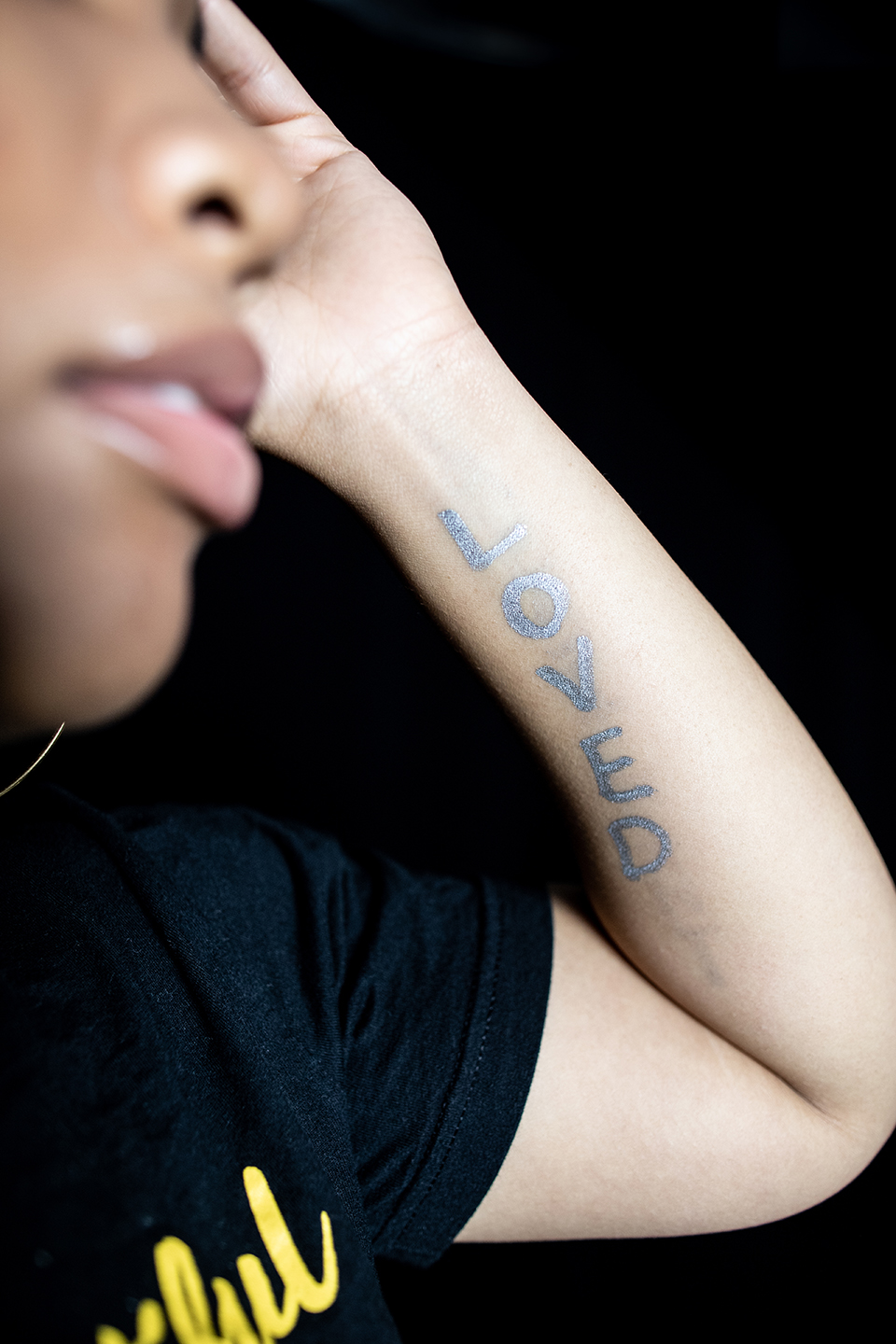
LOVED. “A stereotype that plagues our community — and it’s built off of truth — is that a lot of black women are disregarded, forgotten, unloved. So this is my way of regaining our power back. To show that we are loved by ourselves, by God, and we’re loved by our family. … We’re going to love ourselves so hard and love each other to the point that we divide the stereotypes of being disregarded and unloved and unappreciated.” -Heavin Hunter-Hernandez
Not only have Blacks been discriminated against for having a different skin color than white people, but Blacks also have been pitted against each other for having lighter or darker shades than the person next to them. This is called colorism.
In the 1988 film “School Daze,” Director Spike Lee addresses the issue of colorism. The women in the film are split up into two groups: the “Wannabes,” which includes women who are light-skinned with long, straight hair, and the “Jigaboos,” which includes dark-skinned women with short hair, Moore said.
Sophomore Raica Kwizera grew up in Rwanda, East Africa, and had to face colorism head on.
Because her father had darker skin than her mother, she ended up with darker skin than two of her four siblings, and others in the community treated her differently.
Her experience in Rwanda helped her feel empowered when moving to a country like America where race is a more burning issue, Kwizera said.
She reminded herself, “My Black is beautiful, and if I really did want to change it, it’s something I can do something about, but others cannot become like me.”
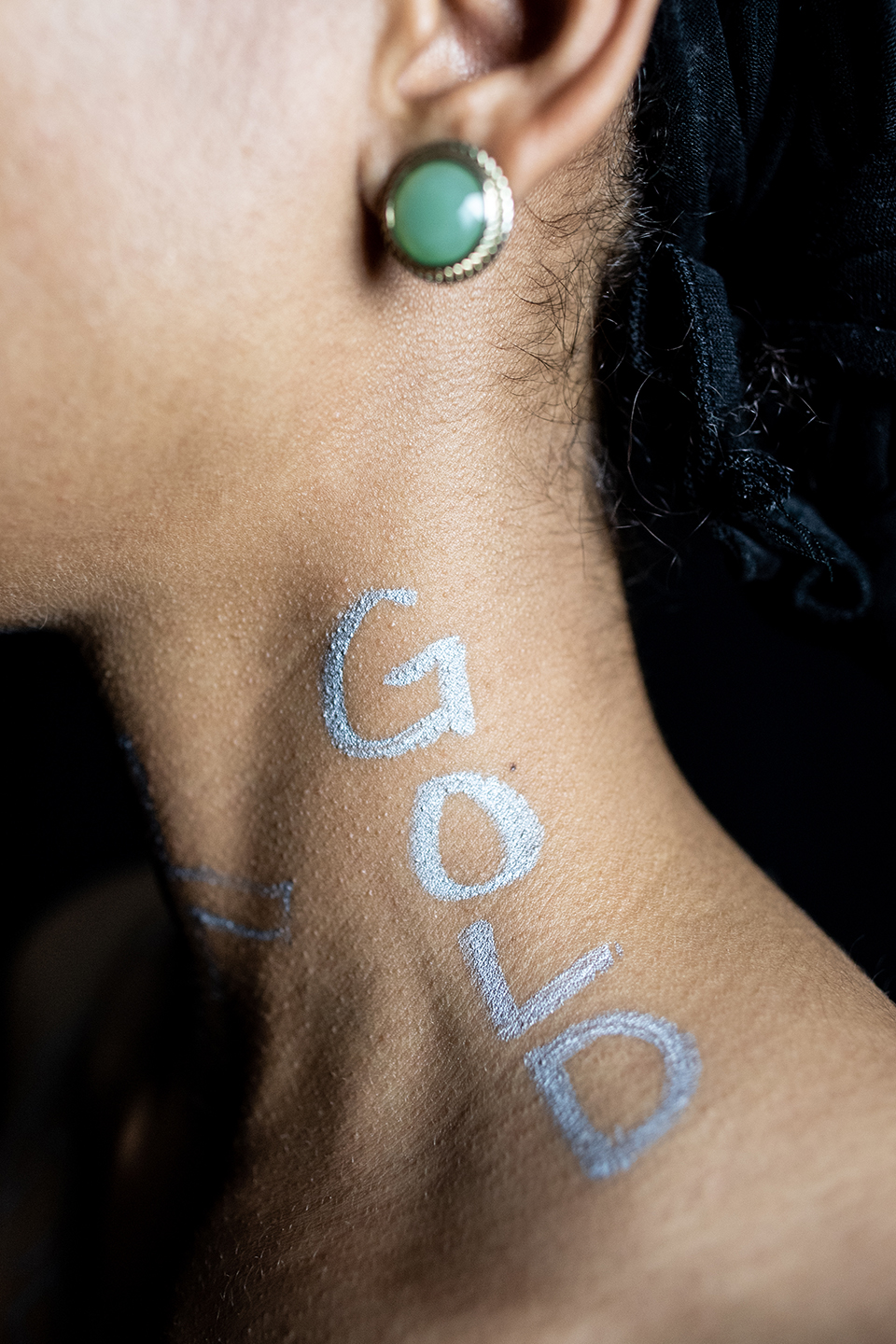
GOLD. “Everyone in most societies recognizes gold as something that is valuable. … But even if we weren’t to apply that value, it would still be something that is pure, still something that is beautiful. … I feel as though I have a heart of gold. … I like that to be present when I interact with people so that they see that my heart is something that has been worked on and refined.” -Olivia Robinson
Being Black means that one goes through different life experiences, which leads to unique perspectives.
No matter what shade of black someone is — light skin or dark skin — being Black does not mean that one is dirty or unkempt, students said.
“I think that’s exactly why the Black is Beautiful campaign is necessary — to try and combat the belief that Black [is] impure,” Wilkins said. “It isn’t unclean and does not always have a negative connotation.”
Black oppression in America
White efforts to degrade Blacks date back 400 years.
“We have to go back to the [1600s] and 1700s, where black and brown bodies were being enslaved and placed in the [holds] of ships by millions and becoming part of the transatlantic slave trade,” Wilson said.
Prior to the transatlantic slave trade, slavery was circumstantial. People became enslaved because their country was conquered or they fell into debt. Europeans created a slave trade based on race and forced Africans into permanent bondage. To maintain this system, European powers treated the enslaved Africans as less than human.
Plantation property lists placed enslaved Africans below animals.
“If you look at a plantation manifesto, ‘manifesto’ is a list of everything that a plantation owner has,” Wilson said. “It would say something like this: ‘Jim has a wife, three kids and a granddaughter. He [has] 100 head of cattle, six horses, 12 chickens and three slaves.’”
Even after slavery ended, Blacks endured Jim Crow segregation, which added to the dehumanization Blacks felt, Wilson said. To maintain white supremacy, white people in the South murdered more than 4,000 African Americans. With these lynchings, or mob executions, white people aimed to keep Blacks in their place.
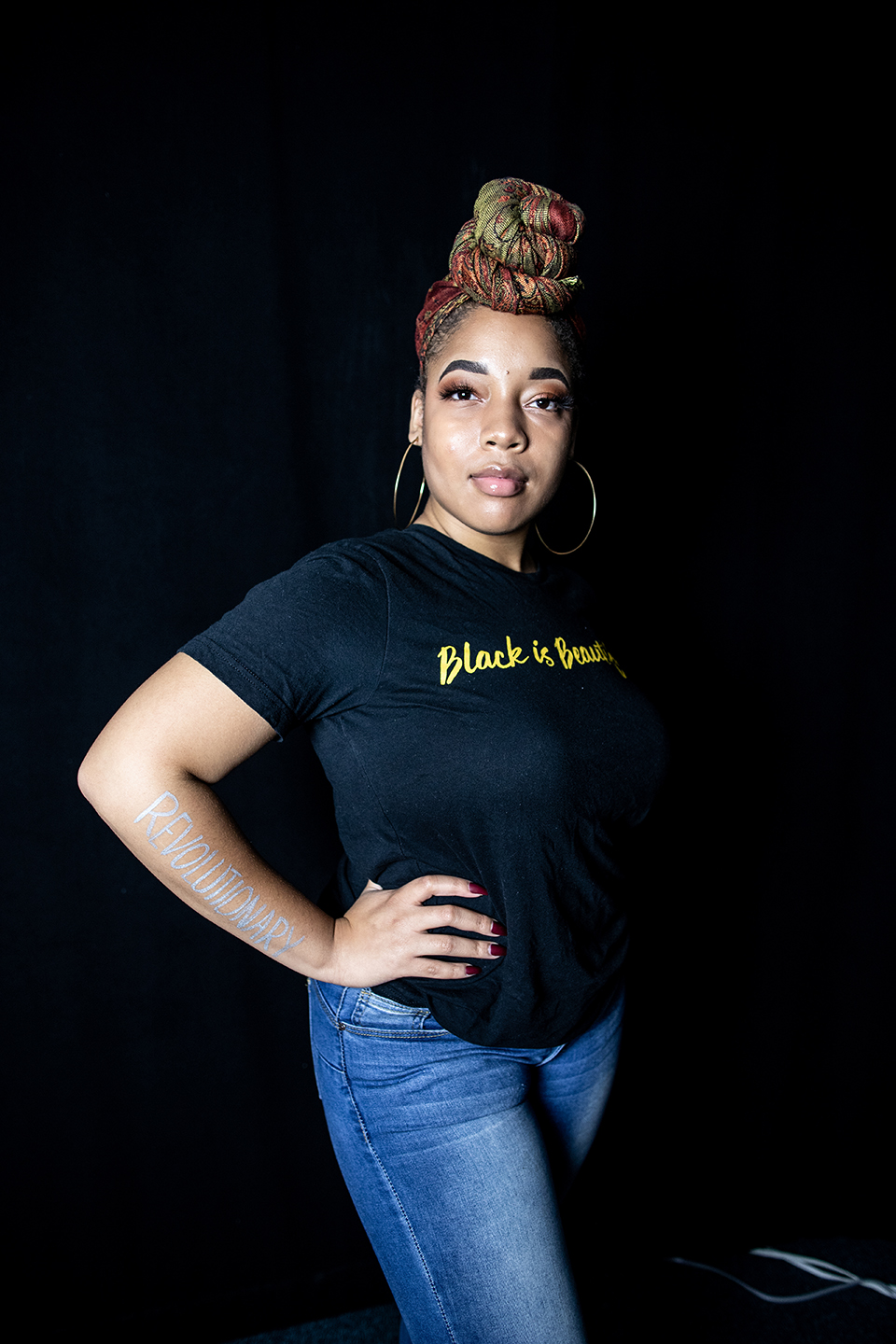
REVOLUTIONARY. “I’ve always thought of [The Black Panthers movement] as revolutionary. So I felt like I am a living dream for a lot of people who were fighting during that time … and it’s up to me to make sure that revolution continues.” -Heavin Hunter-Hernandez
Whites also mocked and distorted African American identity through minstrelsy that dates back to the 1830s.
“Minstrelsy was a form of theater that became one of the most popular forms of entertainment in America for well over 70 years,” Wilson said. “What you had was white men dressed in blackface, pretending that they were Black people.”
Minstrelsy further disrupted Black communities by dictating how African Americans should act and how they should look.
If Blacks wanted to pursue a career as a performer, they had to perform in minstrelsy; blacken their faces, pinken their lips and mess up their hair, Wilson said.
This portrayal of Blacks shaped the nation’s beliefs about what it meant to be Black.
Advertising, television and movies represented Black people using minstrelsy stereotypes, portraying Blacks as childlike, joyful, unintelligent, overweight and with huge pink lips. The 1987 documentary “Ethnic Notions” explored these stereotypes.
American culture “set the African American aesthetic against Eurocentric ideas of what is beautiful,” Wilson said.
While Martin Luther King Jr. and the Southern Christian Leadership Conference fought for greater civil rights through nonviolent action like sit-ins, freedom rides and marches, others pursued a more aggressive path through the Black Power Movement.
REDEEMED. “I think that speaks to my relationship with my lord and savior. … I am redeemed by his grace, and I feel as though that is part of my identity. … That is something that is essential to understanding my outlook on the world. I believe the cross also symbolizes my faith. It symbolizes sacrifice and it also symbolizes investment.” -Olivia Robinson
“In the ‘60s, we see the emergence of the Black Power Movement, which is a much more radical and militant — unapologetically militant — radical movement, where Black folks are no longer striving to convince white people that they are civilized and capable human beings,” Satchel said.
The Black Power Movement helped Blacks feel more content in their own skin. The movement taught Blacks, some for the first time, that it did not matter what the white person next to them thought about their hair or skin color or where they came from.
What mattered was what they thought about themselves.
Black is Beautiful Campaign
Kwame Brathwaite helped spark the Black is Beautiful movement with a series of photographs documenting African Americans in the 1960s.
Brathwaite’s work challenged mainstream beauty standards, conveying the raw and natural beauty of Black people throughout history.
Photos of the ‘Black is Beautiful: The Photography of Kwame Brathwaite’ exhibition at the Skirball Cultural Center, Los Angeles.
“Influenced by contemporary Black nationalists Carlos Cooks and Marcus Garvey, Brathwaite aimed to encourage others to reclaim a lost African heritage, instill pride in having natural hair and all shades of skin and reject efforts to conform to white ideals of beauty,” according to Daily Art Magazine.
Brathwaite’s art bolstered Black pride and helped undermine white supremacy.
The Black Arts Movement emerged parallel to Brathwaite’s photographs, as Black female writers like Toni Morrison, Alice Walker and Audrey Lord proved they were unafraid to be themselves and speak their minds.
The authors used their work to say “loudly and clearly, ‘I do not have to look like fragile, petite, blonde, blue-eyed, white people to be beautiful,’” Satchel said. “‘I’m beautiful just like I am with my big natural afro, and my beautiful dark brown skin, or light brown skin, or honey, or mocha, or caramel, or chocolate, dark chocolate. All these beautiful hues come from us.’”

STRONG. “The important thing is, yes, we go through things. But how strong can you be to bounce back from those things and not only not allow those things to define you, but allow those things to propel you into what God has for you and [help] it to shape who you are?” -Peace Ikediuba
Another development of the Black is Beautiful Campaign was James Brown’s 1968 song, “Say it Loud – I’m Black and I’m Proud,” which became an anthem for the movement. This song still resonates with African American leaders on campus, like Wilson.
Blacks started to rebel against any and all attitudes that suggested they were not worthy of being beautiful.
“At that very moment, the individual stands up and maintains their own dignity,” Wilson said. “The thought is, ‘I’m not ugly; matter of fact, I’m very beautiful.’”
By embracing their culture, Blacks began to live unapologetically, which in turn created a space “more conducive for them to thrive,” Wilson said.
“To wear an afro, to wear braids, to start wearing a dashiki [a brightly colored West African shirt], to start adorning oneself with a lot of jewelry, to start wearing typical clothes in non-typical ways and then saying, ‘This is what beauty is and this is the standard of style,’” said David Holmes, dean of Curriculum and General Education who created Pepperdine’s African American Studies minor.
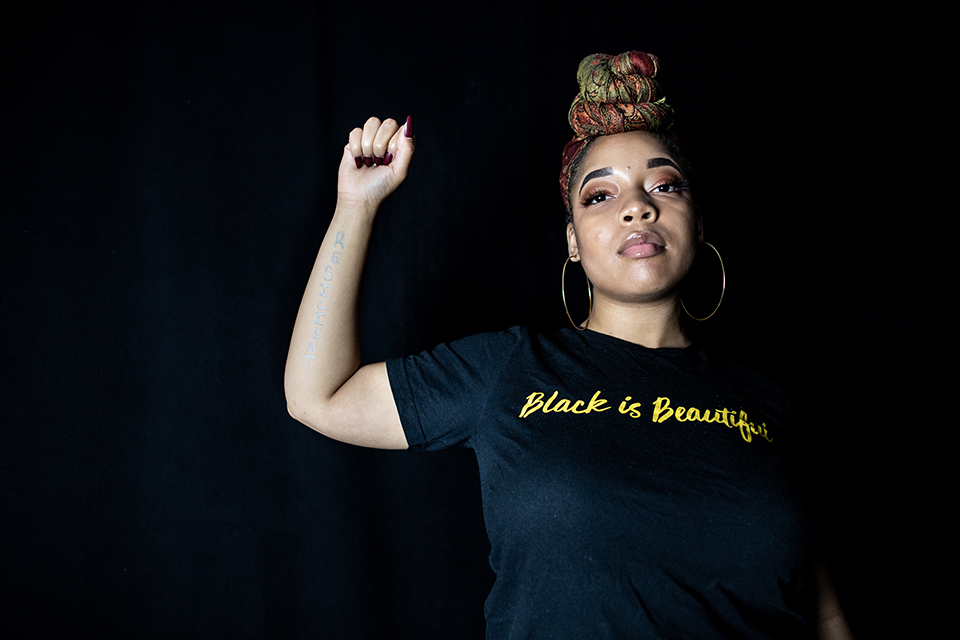
RESILIENT. “My resilience is something that I prided myself upon because I feel like it is the recipe of me. As a black woman, I not only have to face what it’s like to be a woman … but I also have to overcome the struggles that come with being Black. … I know that a lot of my family and those who came before me had to be resilient. So I feel like it’s an honor for me to stand here and call myself resilient. … I am their dream come true. I am what they struggled so hard for.” -Heavin Hunter-Hernandez
The Black is Beautiful campaign also critiqued commercial standards of beauty.
“Capitalists are trying to numb us into being sheer consumers of what they deem is right and replacing them with individuals that say no,” Holmes said. “This is when we get a chance to determine what beauty is, not [some way] for them to make money for a large corporation.”
Black people took it into their own hands to show white people that they could not be bought and that they are beautiful inside and out.
“This wide variety and diversity of types of beauty then become more than just Black is Beautiful,” Satchel said. “But Black comes to encapsulate all the rich varieties of beauty found in people of African descent.”
The movement does not aim to promote Black beauty in order to undermine the worth of others.
“It’s saying … that my beauty actually can augment your beauty,” Wilson said. “I don’t have to be beautiful at the expense of your ugliness because radical beauty raises everyone’s dignity.”
Still not beautiful enough
Students interviewed on campus said they still sometimes feel as if they are not enough and that they are not beautiful.
“For Black women in particular, I’ve heard sentiments that we feel as if there’s nothing that we can do right,” Wilkins said. “I guess when it comes to expressing ourselves as Black women, we have to maintain a certain standard that is not our own.”
When it comes to hair, American society has not accepted Black women for who they naturally are.
“If we wear braids or if we wear Afrocentric styles or if we wear our natural hair, we can kind of risk being perceived a certain way like in a professional setting,” Wilkins said. “So much so that there had to be legislation passed in order for us to wear our hair the way it grows out of our head.”
In 2019, California was the first state to pass a law that “legally protects people in workplaces and K-12 public schools from discrimination based on their natural hair,” Phil Willon and Alexa Diaz wrote in the Los Angeles Times.
Now, if Black women decide to straighten or relax their hair, other people may judge them.
“We are kind of perceived as being self-haters, or being too egocentric or trying to assimilate too much,” Wilkins said.
In a sense, Black people can never do right.
Discrimination today has merely shifted to micro-aggressions, Moore said.
“The difference between racism then and racism now is then it was overt; you knew exactly who liked you [and] who did not like you,” she said. “It was in your face. There was nothing veiled about it. Now, it’s so subtle that you don’t realize it until it is right there in your face.”
Moore said she believes that it’s time to teach others about Black history and what Black people have had to go through.
“If you don’t educate people differently, then yes, you’ll continue to get the same thing over and over and over again,” Moore said.
Pepperdine: It’s time for a change
Although the Black is Beautiful Campaign started in the 1960s, all 10 Pepperdine students interviewed said they don’t always feel comfortable in their own skin, even at a university that preaches Christian values and community.
At a predominantly white institution like Pepperdine, Black students expressed their inability to be their true selves and complained that others have not tried to understand what a Black experience is like.
“When I look around, I see primarily blue eyes and blonde hair,” Wilkins said. “So that’s kind of the standard of beauty here. When you look around and you don’t see yourself represented as much, you can feel inferior.”
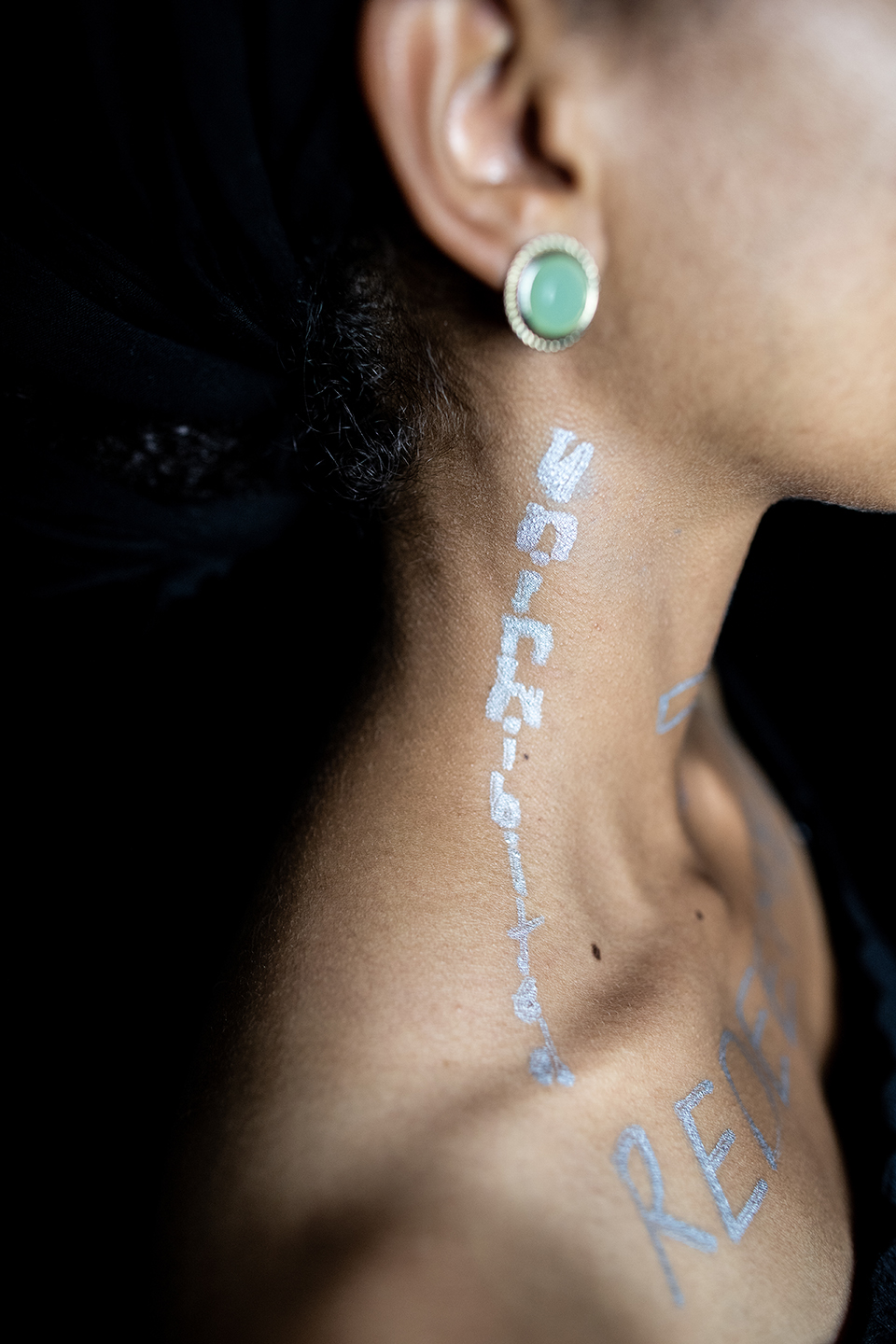
UNINHIBITED. “It describes how I approach the world. I don’t feel as though there’s anything within me that is an obstacle to me being able to do the great things that I’ve set my heart and mind to. … I see the things that exist around me merely as things that are part of my journey, not necessarily things that are meant to cease that journey.” -Olivia Robinson
Pepperdine’s Black Student Association created Black is Beautiful T-shirts for their members to help instill Black pride. Although they didn’t teach members about the campaign’s history, Black students wear the shirts as an outright expression of identity.
Black students are a numerical minority on campus. As of October 2018, there were only 176 Black or African American students enrolled in Seaver College out of 3,627 students, according to the Pepperdine Office of Institutional Effectiveness Common Data Set. That’s less than 5%.
Senior Ikechukwu Egwuonwu said he has felt stigmatized on Pepperdine’s campus.
“A lot of people ask me if I was here [at Pepperdine] based on some diversity thing or something, or the reason I’m a Posse scholar is because I’m Black, or just people acting like I didn’t earn this,” Egwuonwu said.
For Black students, simply being on a campus that is not diverse in terms of students and faculty can cause internal issues.
“If you don’t see any Black faculty members, you think you’re not being represented,” Bell said. “Decisions and talk are going to be had, but your voice isn’t going to be heard. You are going to feel like your opinions don’t matter as much.”
Black professors are hard to come by at Pepperdine.
“The Humanities and Teacher Education division [is] one of the largest academic divisions on campus, yet we only have one Black, female, full-time professor and one Black, full-time, male professor [Holmes, who is leaving in December],” Moore said.
When faced with being the only Black person in a class, Black students often have to deal with being the spokesperson for their entire race when they are not representative of every Black person, students said.
Black faculty and students believe that the first step to change is to just have their voices heard.
“We need to include more voices, more perspectives, more cultures into the discussion,” Satchel said. She cited an African proverb: “Until lions have historians, tales of the hunt will always glorify the hunter.”
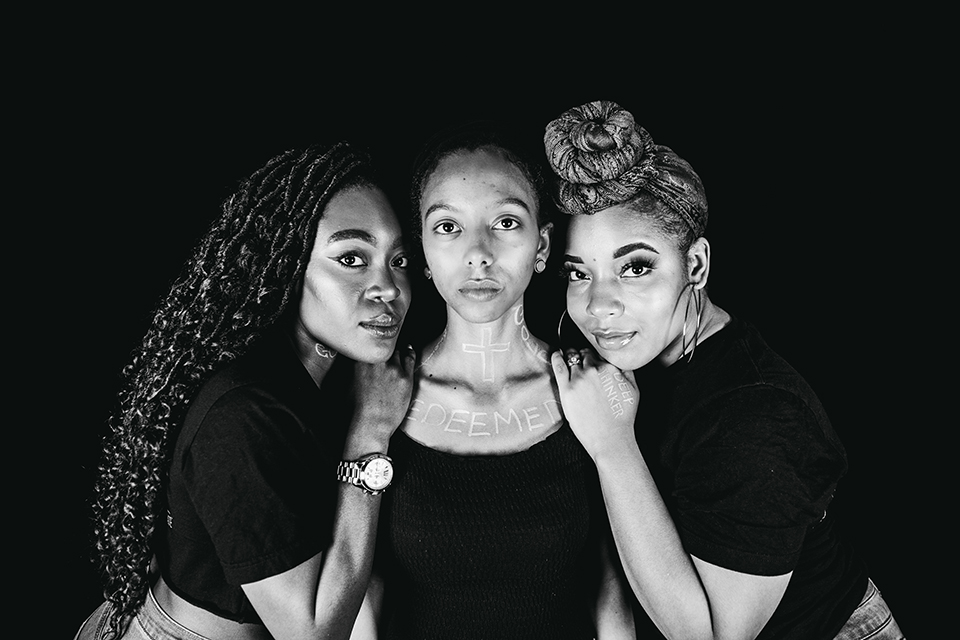
Modeled by Peace Ikediuba, Olivia Robinson & Heavin Hunter-Hernandez. Photo by Milan Loiacono.
Students expressed that there are too many general education classes that focus on white and European history and none solely about Black history. They want to hear about Black history from the perspective of Black people.
“We should have a more diverse curriculum,” junior Amani McCalleb said. “If what we learn could be tailored to what students actually want to learn, like an African American GE, it can help others who are not Black have more diverse views.”
Students at Pepperdine can help remove the racial sentiment of light and dark by becoming an ally for Blacks on campus, faculty and students said.
Wilkins said it’s important for students who are not of color to support Black organizations on campus and attend all of their events.
“I think really just supporting all of our [Black] initiatives and making sure that the community is tight and we have a strong enough presence [will help],” Wilkins said.
It’s important for non-Black students to not be afraid to step outside of their comfort zone and research the history of others, students said.
“Engage in relationships with people who are not like you and bring something to the conversation that allows the space for questioning,” senior Olivia Robinson said.
Wilson said all students on campus should take time to understand how Black is beautiful.
“The call is to courageously move forward in embracing diversity, to embrace a way of looking at beauty, not just from one’s own point of view but learning other people’s point of view,” Wilson said. “This is what it means to be like Christ.”
_________________________________________________________________
Contact Brianna Willis through email: Brianna.Willis@pepperdine.edu or Twitter: @briannajazmyn

